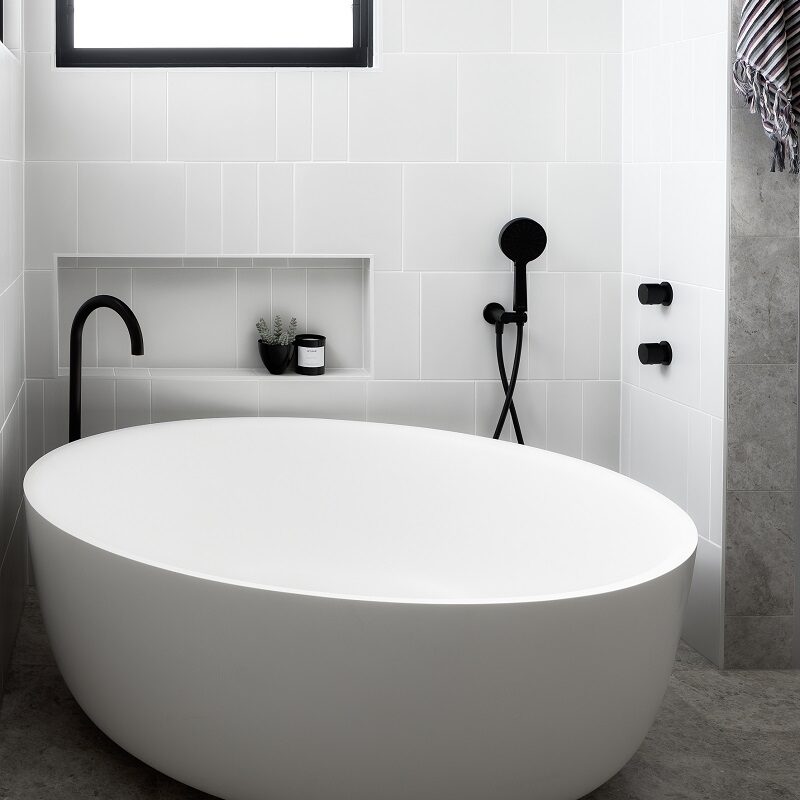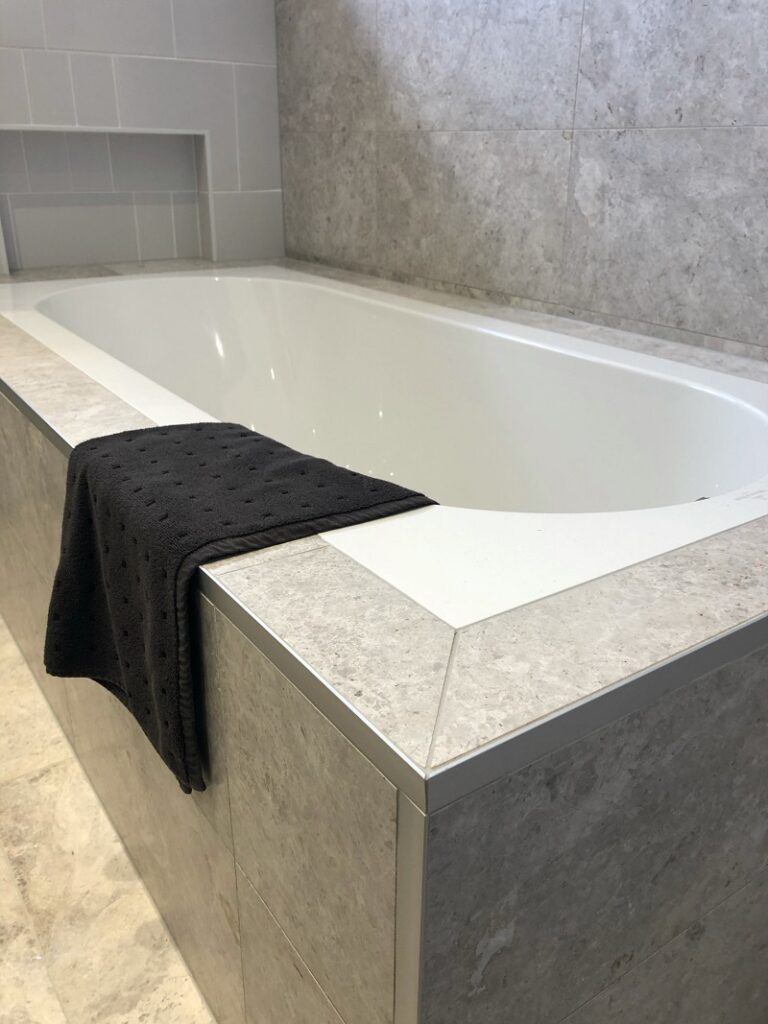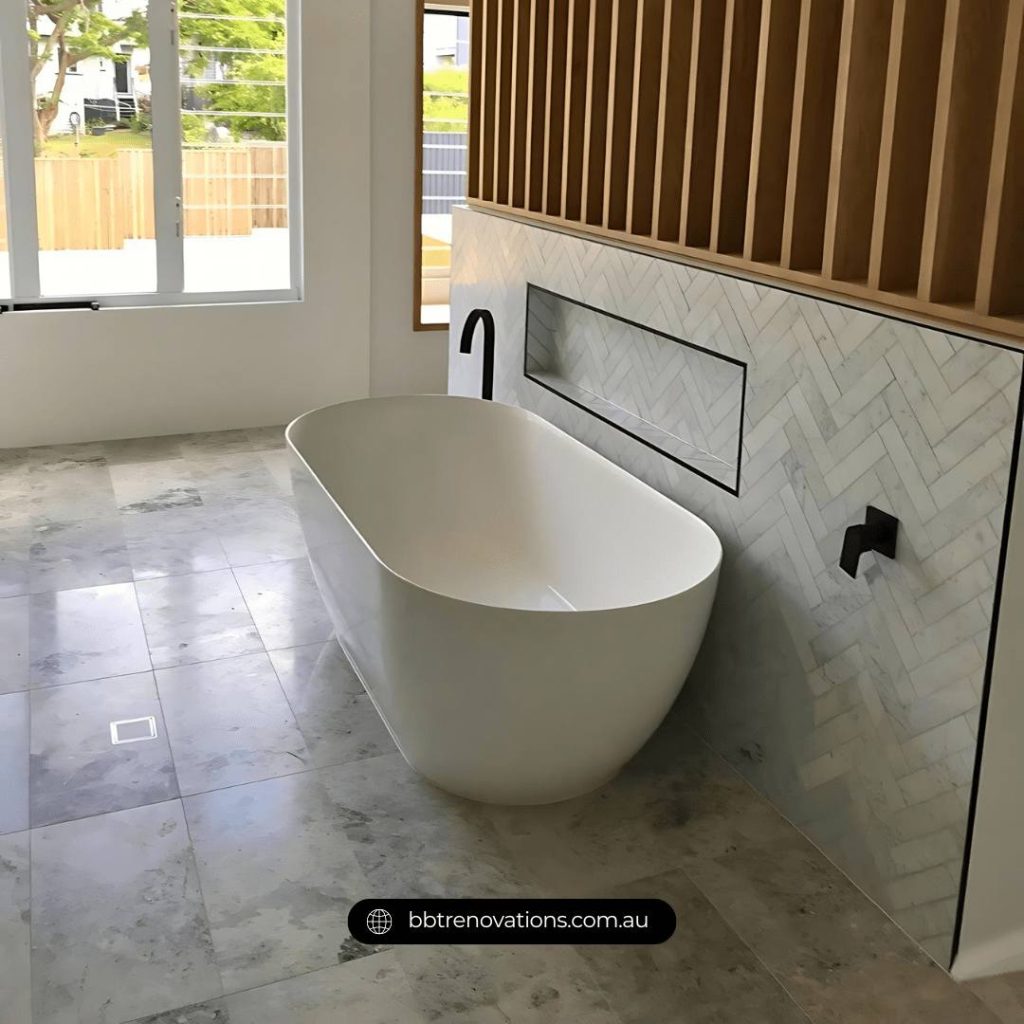Embarking on the journey of selecting a new bathtub can be both a delightful and thrilling venture. With a diverse selection of options available in today’s market, it is entirely natural to feel somewhat daunted at the outset. However, there is no cause for concern. You are well on your way to uncovering the ideal enhancement for your bathroom.
The optimal choice of bathtub is profoundly affected by essential considerations such as your bathroom dimensions, budget, and individual style preferences. Are you in search of a deep soak for ultimate tranquillity, or do you prefer a quick splash for ease of use?
Perhaps your vision encompasses a lavish spa-like atmosphere or something more pragmatic and utilitarian?
Your bathtub selection holds the potential to significantly enhance your ability to relax and rejuvenate. The right bathtub can metamorphose your bathroom into a peaceful sanctuary, providing a perfect retreat from the pressures of everyday life. Let us delve into various popular bathtub types that will assist you in identifying your perfect match.

Essential Considerations for Selecting Your Ideal Bathtub
Choosing the perfect bathtub can dramatically enhance your overall bathroom experience. It is crucial to reflect on various aspects, including materials, dimensions, styles, and the installation process to ensure a seamless fit for your distinctive space.
In-Depth Examination of Bathtub Materials and Their Unique Benefits
Bathtubs are crafted from an array of materials, each presenting unique benefits and characteristics. Below are some commonly utilised options:
- Acrylic: This lightweight substance is not only easy to maintain but also excels in heat retention, allowing for long, soothing baths that keep the water warm.
- Cast iron: Renowned for its timeless aesthetic and remarkable durability, cast iron bathtubs can endure for a lifetime with the right care and maintenance.
- Fiberglass: An economical choice, this lightweight option is easy to manage, though it may lack the longevity offered by other materials.
- Stone: Esteemed for its opulent appeal and distinctive attributes, stone bathtubs often come with a higher price tag due to their luxurious nature.
Each material contributes a unique aesthetic and tactile sensation. Reflect on which qualities resonate most with you as you make your decision.

Understanding Bathtub Sizes for Your Unique Bathroom Space
Bathtubs are available in a multitude of sizes to cater to different spaces and user needs. When determining the suitable size for your new bathtub, consider the following crucial factors:
- Dimensions of your bathroom – Evaluate how much space you have available for a bathtub installation.
- Height of potential users – Account for the height of those who will be using the bathtub regularly.
- Desired space for comfort – Do you prefer extra room to stretch out and truly enjoy your bath?
Typically, standard bathtubs measure approximately 150 cm in length and 75 cm in width. However, there are options available for both smaller and larger dimensions. Be diligent in measuring your available space before making any final decisions to avert fitting issues.
Exploring the Diverse Styles and Shapes of Bathtubs
There exists a plethora of bathtub styles to satisfy various preferences and aesthetics. Below are some popular choices:
- Freestanding: This self-supporting design often introduces a touch of elegance and sophistication to any bathroom setting.
- Alcove: Specifically crafted to fit snugly between three walls, making them ideal for compact spaces.
- Corner: These bathtubs are engineered to seamlessly occupy a corner, optimising space efficiency.
- Drop-in: These tubs are installed within a frame or deck, offering a sleek and integrated appearance.
The shape of your bathtub can significantly influence the overall aesthetic and user experience of your bathroom. Oval tubs provide additional comfort, while square designs can impart a contemporary and minimalist vibe. Reflect upon what best complements your bathroom's overall style and décor.

A Thorough Comparison of Bathtub Installation Methods
The method you select for bathtub installation is pivotal, as it can influence both the overall cost and the complexity of the installation process. Here are some prevalent installation types:
- Built-in: Designed to fit within a designated area in your bathroom for a seamless and integrated appearance.
- Freestanding: This type requires no additional support, allowing for flexible placement throughout the space.
- Walk-in: Equipped with a door for easy entry, making it ideal for individuals with mobility concerns or disabilities.
Consider the requirements of those who will be using the bathtub and the level of installation effort you are prepared to undertake. Some models are more straightforward to install than others, and in certain cases, you may need professional help to ensure proper installation.
Additional Crucial Factors to Consider Beyond Basic Bathtub Selection
When it comes to selecting the right bathtub, there are numerous considerations extending beyond just size and type. Elements such as comfort, style, and maintenance requirements play vital roles in your overall decision-making process. Let us delve deeper into some key factors that warrant your attention.
Enhancing Bathroom Comfort with Thoughtful Features and Design
Comfort is an essential element that can greatly enhance your bathing experience. Seek out bathtubs that feature ergonomic designs providing necessary support for your body. Certain models come equipped with built-in headrests or armrests that can significantly enhance your relaxation experience while soaking.
Furthermore, textured surfaces can improve safety by minimising the risk of slips during bathing. Many modern bathtubs now incorporate massage jets that deliver a spa-like experience, helping to relieve muscle tension and promoting improved circulation throughout your body.
Temperature control is another crucial comfort feature worth considering. Premium bathtubs may include integrated heating systems that maintain your water temperature for extended periods, allowing you to indulge in a longer, more luxurious soak without the inconvenience of refilling with hot water.
Selecting the Ideal Colour and Design for Your Bathtub
Your bathtub can act as a stunning focal point within your bathroom. While classic white remains a timeless option that complements most decors, do not hesitate to explore alternative colours. Subtle shades of grey, beige, or even vibrant tones can inject personality and charm into your space.
When making your selection, consider the overall aesthetic of your bathroom. A sleek, modern bathtub may clash with a traditional setting. Freestanding tubs often serve as captivating centrepieces, while built-in options can integrate seamlessly with your bathroom's overall design.
The choice of material is also crucial, as it greatly influences both the visual appeal and tactile experience of your bathtub. Glossy acrylic tubs are favoured for their ease of maintenance, while stone or concrete tubs offer a distinct and luxurious aesthetic. Additionally, metal tubs, such as those crafted from copper, can add a vintage charm to your bathroom.
Simplified Maintenance and Cleaning of Your Bathtub
Selecting a bathtub that is straightforward to maintain can simplify your everyday life and save you valuable time. Various materials possess differing levels of resistance to stains and scratches. Acrylic and fibreglass tubs are famed for their low-maintenance attributes, requiring just simple wipe-downs to remain clean and in excellent condition.
While cast iron tubs with enamel coatings are durable, they can be prone to chipping. If this occurs, it is critical to address any damage promptly to prevent rust formation. Natural stone tubs may require periodic sealing to protect against stains and enhance their longevity.
Moreover, consider the shape of your bathtub concerning cleaning practicality. Tubs with intricate corners or textured surfaces may present challenges during cleaning. In contrast, smooth and simple designs are often easier to maintain. Some modern models even incorporate self-cleaning features, providing significant time-saving benefits.
Connect with Brisbane’s Leading Bathroom Renovation Professionals
If you are prepared to discover your perfect bathtub or have any questions regarding your upcoming bathroom renovation project, please do not hesitate to contact us today.
Thorough Responses to Common Questions About Bathtubs
Choosing the right bathtub necessitates thoughtful consideration of various aspects such as size, material, and design. The following frequently asked questions can serve as a practical guide throughout your decision-making process.
How Can I Precisely Measure the Size of My New Bathtub?
Accurately measuring your bathroom space is of utmost importance. Consider who will utilize the bathtub and the ways in which it will be used. A standard bathtub typically measures around 1.5 metres in length, but variations exist with both shorter and longer options available. Always ensure to check your doorways and hallways to ascertain that the bathtub can be manoeuvred through them without any complications.

What Are the Key Advantages of Choosing a Porcelain Bathtub Over a Plastic One?
Porcelain bathtubs provide remarkable durability and resistance to scratches, ensuring they maintain heat for extended periods while delivering a solid and luxurious feel. In contrast, plastic tubs are lighter and generally more economical. They are simpler to install and come in a broader array of shapes and designs. Your final selection will depend on your budget and specific needs.
Which Bathtub Material Is Most Appropriate for My Renovation?
Acrylic emerges as a popular option for renovations due to its lightweight nature, warmth to the touch, and effortless cleaning. If you desire a classic appearance and are untroubled by the weight, cast iron could be a superb alternative. Fibreglass serves as a cost-effective choice, although it may not boast the same durability. Consider your style preferences, budget, and the desired longevity of the bathtub when making your decision.
What Bathtub Material Should I Choose If I Have Hard Water at Home?
If hard water is a concern in your household, it is advisable to select non-porous materials such as acrylic and porcelain, as they resist staining and are easier to clean. Avoid materials like copper or natural stone, which may react unfavourably with hard water and become discoloured over time.
Acrylic vs Fibreglass Tubs: Which Option Should I Opt For?
Acrylic tubs generally exhibit greater durability and excel at retaining heat longer than their fibreglass counterparts. They also resist scratches and chips more effectively. Conversely, fibreglass tubs are lighter and often more budget-friendly, making them an enticing option for individuals seeking affordability. If durability and longevity are paramount, investing in an acrylic tub may prove worthwhile.
What Essential Information Should I Know About Alcove Bathtubs Before Making a Purchase?
Alcove bathtubs are specifically designed to fit snugly between three walls, making them an excellent choice for compact bathrooms. They typically offer simpler installation compared to freestanding models. Ensure to measure your available space accurately. Additionally, consider whether you want a shower-tub combination and verify if you require a left-hand or right-hand drain for proper installation.
What sort of bathtub should I choose? A quick guide to finding your perfect soak
The Article: Choosing the Right Bathtub: A Quick Guide to Your Perfect Soak first appeared on https://writebuff.com
The Article Bathtub Buying Guide: Find Your Perfect Soak Today Was Found On https://limitsofstrategy.com

